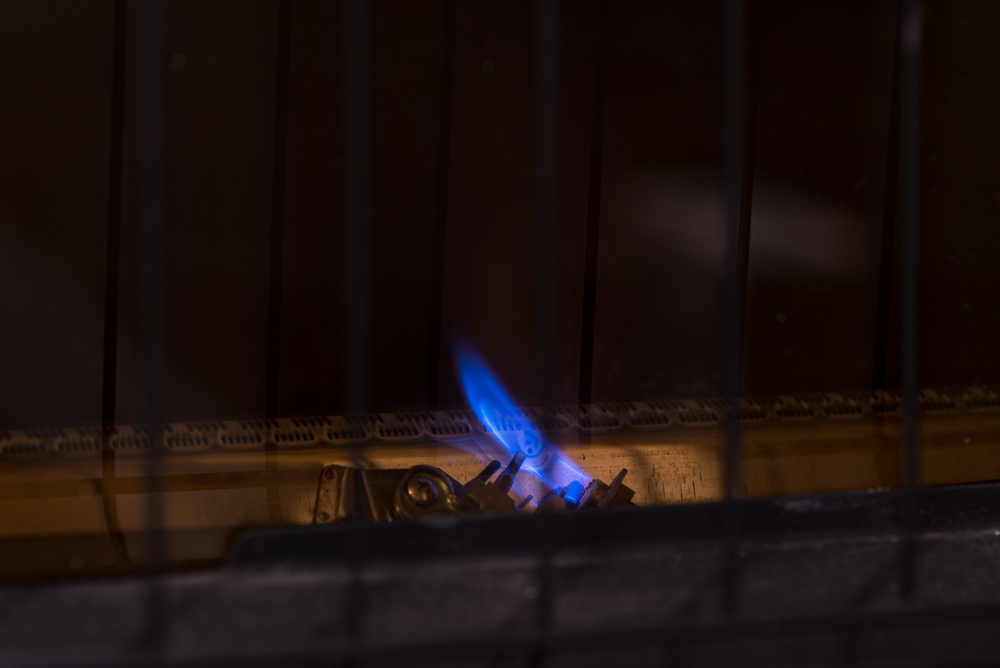
Pilot Light vs. Electronic Ignition: What to Know About Starting Your Furnace in Woodbine, KS
October 4, 2025 9:24 pm Leave your thoughtsIf you live in Woodbine, KS, winter brings cold nights and brisk mornings where a reliable heating system is more than a luxury. At the heart of your home’s heating system is your furnace, and one of the most important details to understand is how it starts. Whether your furnace relies on a traditional pilot light or a modern electronic ignition system, knowing how it works helps you maintain comfort and safety. To know your furnace better, you need to understand how each ignition method differs and what that means for your home.
The furnace’s ignition system is the starting point for the heating cycle. When your thermostat senses a drop in temperature, it signals the furnace to turn on. The ignition system lights the burners, which heat the air that is circulated through your home. A pilot light or electronic ignition is essentially the spark that starts the process. This detail may seem small, but it plays a huge role in efficiency, reliability, and overall performance.
In Woodbine, where cold snaps can demand that your heating system works overtime, understanding your ignition system helps you troubleshoot problems and decide when it is time for HVAC maintenance or an upgrade. Homeowners who know their furnace are more prepared for both seasonal use and unexpected issues.
The Traditional Pilot Light System
For decades, most furnaces were built with a pilot light system. This small flame burns constantly, waiting to ignite the burners when the thermostat signals the furnace to begin heating. Pilot lights became a standard feature in gas furnaces and were considered reliable for many years.
The idea is simple: the small flame is always on, and when the furnace needs to run, gas flows to the burners and the pilot light ignites them. The reliability of this system is in its simplicity. If the flame is present, the furnace can run. However, pilot lights are not without drawbacks.
A pilot light requires a constant supply of gas to remain lit, which means energy is being used even when the furnace is not heating. Over time, this can reduce efficiency and increase energy costs. In addition, pilot lights can be extinguished by drafts, dirt buildup, or small malfunctions. If you have ever woken up to a cold house because your furnace stopped working, there is a chance the pilot light went out.
Homeowners in Woodbine who have older furnaces are more likely to rely on pilot light systems. While these systems can still work effectively with regular maintenance, they represent older technology. To know your furnace is to recognize whether it uses this method and to be aware of the maintenance it requires.
Electronic Ignition Systems: Modern Efficiency
In recent years, most new furnaces are built with electronic ignition systems. Instead of keeping a flame burning around the clock, these systems create a spark or use a hot surface igniter to light the burners only when the furnace cycles on. This advancement eliminates the need for a constant gas flame, increasing both safety and efficiency.
Electronic ignition systems generally fall into two categories: intermittent pilot and hot surface igniter. An intermittent pilot still uses a flame, but it is lit by an electric spark only when the furnace needs to run. Once the heating cycle ends, the flame goes out. A hot surface igniter, on the other hand, uses a ceramic component that glows hot enough to ignite the gas when signaled by the thermostat. Both systems remove the need for a continuously burning flame.
The benefit for homeowners in Woodbine is clear. An electronic ignition system reduces wasted energy, lowers utility bills, and provides a more reliable ignition process. These systems are less likely to fail due to drafts or dirt, though they can still wear out over time. When that happens, the repair often involves replacing the igniter, which is simpler and safer than relighting a stubborn pilot flame.
Knowing your furnace means recognizing if it uses one of these modern ignition systems and understanding that it offers efficiency improvements that older models cannot match. Many homeowners upgrade their furnaces specifically to take advantage of this feature.
Comparing Performance: Pilot Light vs. Electronic Ignition
When it comes to performance, both pilot lights and electronic ignition systems will start your furnace, but the differences affect cost, safety, and convenience. In terms of energy use, the constant flame of a pilot light is less efficient. Even though the flame is small, the gas used over an entire season adds up. In contrast, electronic ignition conserves energy by only operating when needed.
Safety is another factor to consider. A pilot light system relies on a flame that can occasionally go out. If this happens repeatedly, it can lead to unburned gas collecting in the furnace, which is a potential hazard. Electronic ignitions reduce this risk since they only produce flame when required. Furnaces with electronic ignition are also built with safety sensors that shut the system down if a problem is detected.
Convenience is a third factor where electronic ignition comes out ahead. Relighting a pilot light can be a hassle, especially during the middle of a Kansas winter night. Electronic systems avoid this inconvenience altogether, making them more user-friendly. Still, many homeowners in Woodbine with older homes may have functional furnaces that use pilot lights. In those cases, routine maintenance and inspections ensure safe and reliable performance.
By comparing these systems, you can better know your furnace and decide if an upgrade is worth considering. While electronic ignition systems generally offer advantages, a well-maintained pilot light furnace can still serve a household effectively.
Choosing the Right System for Woodbine Homes
For residents of Woodbine, KS, the choice between a pilot light and electronic ignition often comes down to whether you are maintaining an older system or investing in a new furnace. If your furnace is more than 15 years old, chances are it uses a pilot light system. If it is newer, it almost certainly has electronic ignition.
When deciding what is best for your home, consider efficiency, long-term cost, and reliability. An older furnace with a pilot light may still work, but it will not be as efficient as a newer model. Utility costs can add up over time, making an upgrade financially worthwhile. Newer furnaces with electronic ignition are also easier to service, often reducing the need for emergency calls when something goes wrong.
Another consideration is safety. While both systems are designed to operate safely, modern furnaces come with multiple safety sensors and features that reduce risks. For families in Woodbine, especially those with children or elderly members, peace of mind is a valuable benefit.
Finally, think about the local climate. Winters in Kansas demand reliable heating, and electronic ignition systems are better equipped to handle repeated cycles without interruption. Knowing your furnace and its ignition system allows you to make informed choices about maintenance, upgrades, and daily operation.
Conclusion
Whether your home in Woodbine, KS, relies on a pilot light furnace or a modern electronic ignition system, understanding how your ignition works is an important part of being a responsible homeowner. Pilot lights represent a time-tested but less efficient method, while electronic ignition brings improved efficiency, safety, and convenience. Each system has its advantages, but knowing your furnace helps you make the best decisions for maintenance and upgrades.
As energy costs continue to rise and technology advances, many homeowners are choosing to invest in furnaces with electronic ignition systems. Yet, with proper care, a furnace with a pilot light can still provide warmth and comfort during Kansas winters. The most important step is to know your furnace, understand its ignition system, and ensure it receives the care it needs to operate safely and effectively.
By taking the time to understand your furnace, you gain confidence in your heating system, improve efficiency, and prepare your home to stay comfortable no matter how cold it gets outside.
Need HVAC Services in Woodbine, KS?
Family- and locally owned and operated since 1996, we have built a reputation for delivering excellent workmanship, dependability, and professionalism to the residents and commercial businesses in the Woodbine and surrounding areas. Our team of highly skilled and knowledgeable technicians specializes in air conditioning and heating system installation, repair, and replacement; boiler and furnace maintenance; and mini-split and general HVAC system care. All of our technicians are fully licensed, bonded, and insured. Contact us today to learn more about what we can do for you!
Categorised in: Furnace, Heating
This post was written by admin
